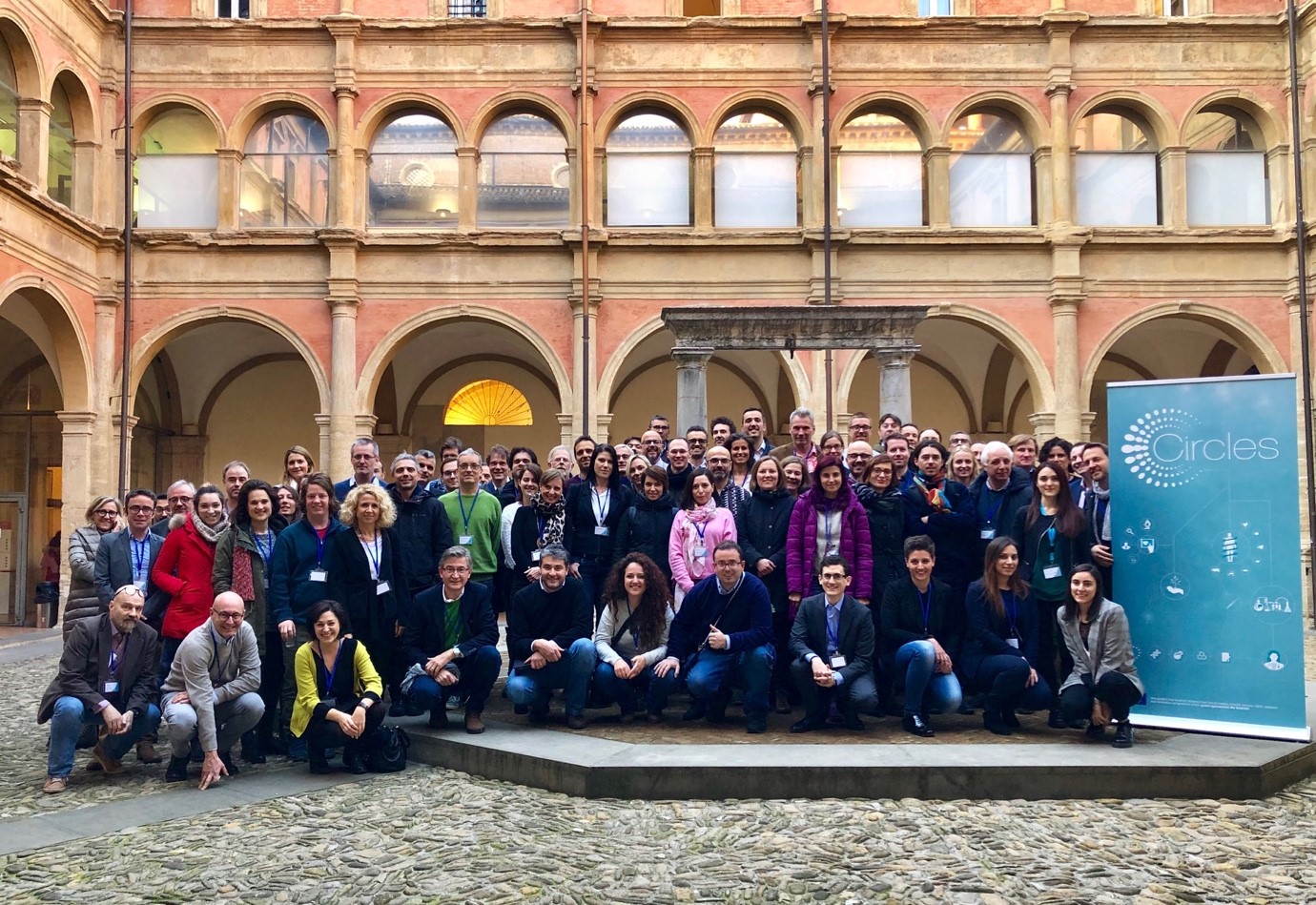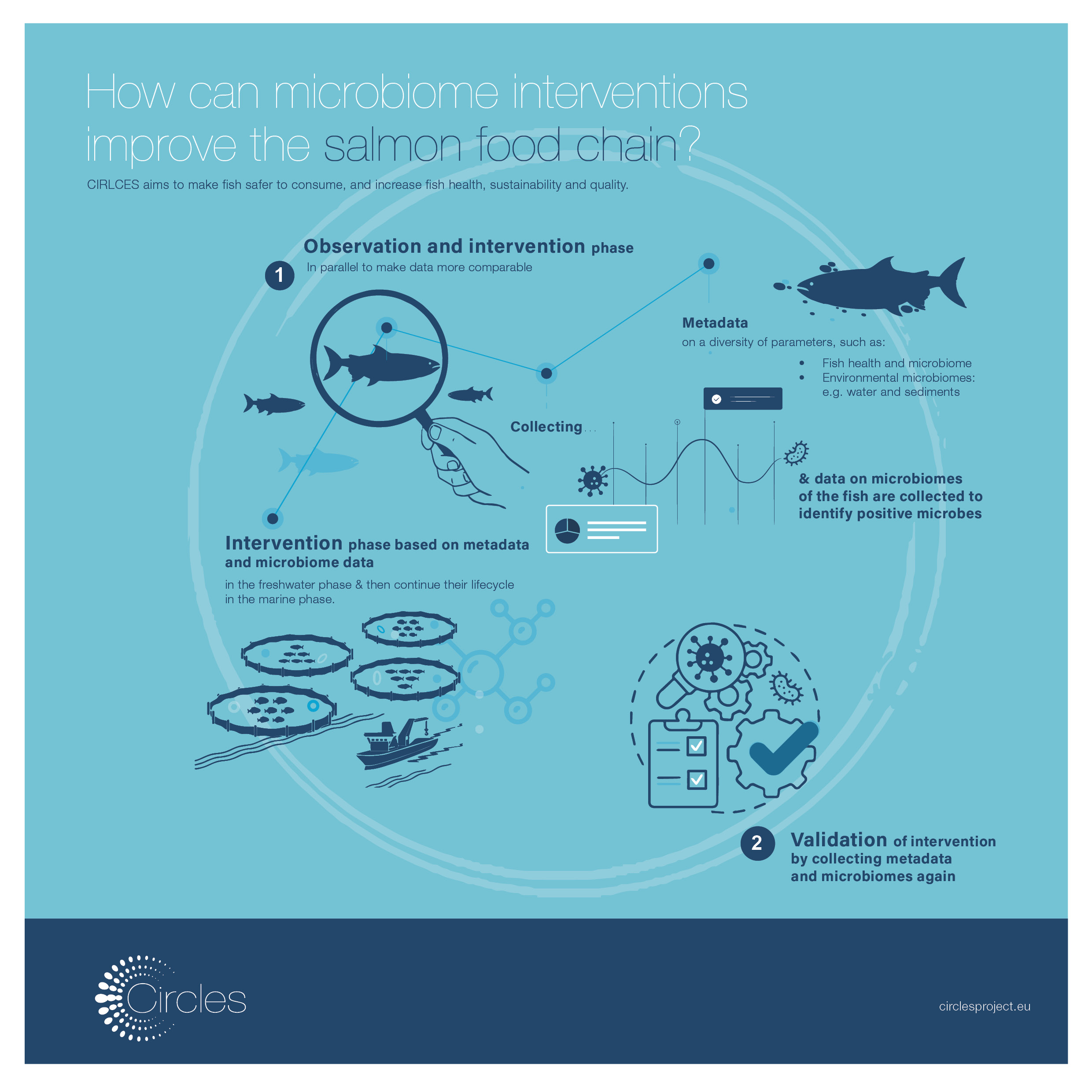By Daniëlle Schweitzer – Hague Corporate Affairs
One year ago, a group of enthusiastic scientists from all over Europe started an adventure called CIRCLES; a five-year lasting research project that aims at making our food system more sustainable and futureproof. What has been realised and achieved so far? And what are our expectations for the (near) future?
Let’s take a step back, what is CIRCLES?
Our research focuses on the potential use of microbiomes, which is a collection of genetic material of microorganisms such as bacteria, fungi and microbes. These tiny creatures live all around us and within us. We are curious to find out how these organisms influence our food production system and how we can use that in our advantage for the production of sustainable food. Over the coming years we will look at the food production processes of spinach, tomato, poultry, swine, farmed and wild salmon and seabream food. After all, who does not like a varied diet?
Sampling, sampling and sampling…
The first half year of CIRCLES was all about setting up the basic infrastructure for the project. Standardisation is essential in this phase. It assures the legitimacy and credibility of the project; two key elements for every research. By now, scientific partners know how to collect samples, how to analyse data and how to store data.
The second half year we met with farmers throughout Europe and set up all the labs in the field with a view to getting ready with our sampling activities; taking bits of soil, air, water, rocks etc. from the surrounding environment. In addition to those ‘natural’ samples, we also collect cattle’s poop, hair and feed, and even cloths and hair from fieldworkers. These elements are all essential, as microbiomes are everywhere around us and its compositions changes continuously depending on its surroundings. Take your own apartment for example. In your apartment lives a composition of microbiomes. If you have sleepover guests that composition will change.
We are happy with the progression we made over this year. According to one of the partners, “this first year of CIRCLES has enabled a deeper interaction among partners, and an exchange of experiences and opinion in each food chain. Of course, this exchange needs to be maintained and even enhanced in the next months to achieve the project goals.”
What can we expect for the (near) future?
Once the samples have been collected, they are shipped all around Europe to different labs, ready for a first analysis. We know microbiomes in the food systems are not optimised, but we do not know what the problem is and how to solve it. We also know the food production system could work better if we alter the environment, but which microbiome is there to blame for? In order to find the ‘troublemakers’ we need to look at the DNA composition of the samples. This will take up most of our time in the coming months.
Hopefully, in a year we will understand how the microbiomes work in the food systems and how we can improve it.
Keep in mind, we are just at the beginning of this adventure. We will see the core activities of CIRCLES performed over the next months. Our scientific curiosity in seeing the first results of CIRCLES is real and alive, and we are looking forward to the next steps. You can stay tuned via our different channels:
- Website: Circlesproject.eu
- Instagram: Microbes4Life
- Twitter: @SciFoodHealth and #CIRCLESEU







